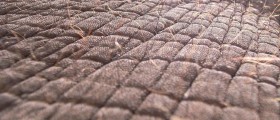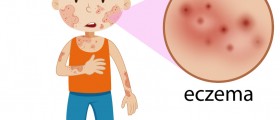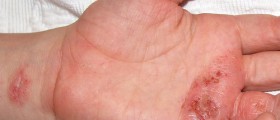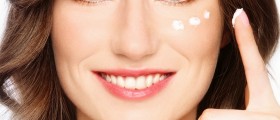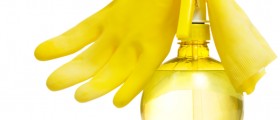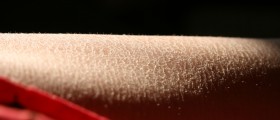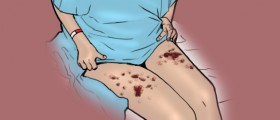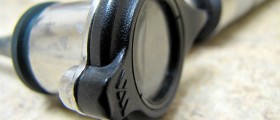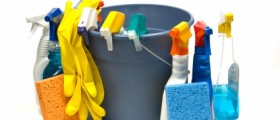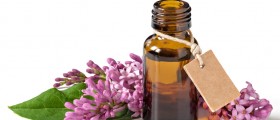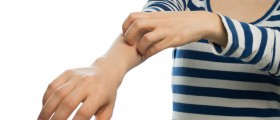Hands that turn red, swollen, itchy, and painful after immersion in water are not an unusual problem. Usually the underlying problem is eczema. The condition is so common that it's actually referred to as hand eczema.
The symptoms are multiple and unpleasant:
- Blisters (vesicles)
- Cracks (fissures)
- Dryness, to the point of peeling and flaking
- Itching
- Pain
- Redness (erythema)
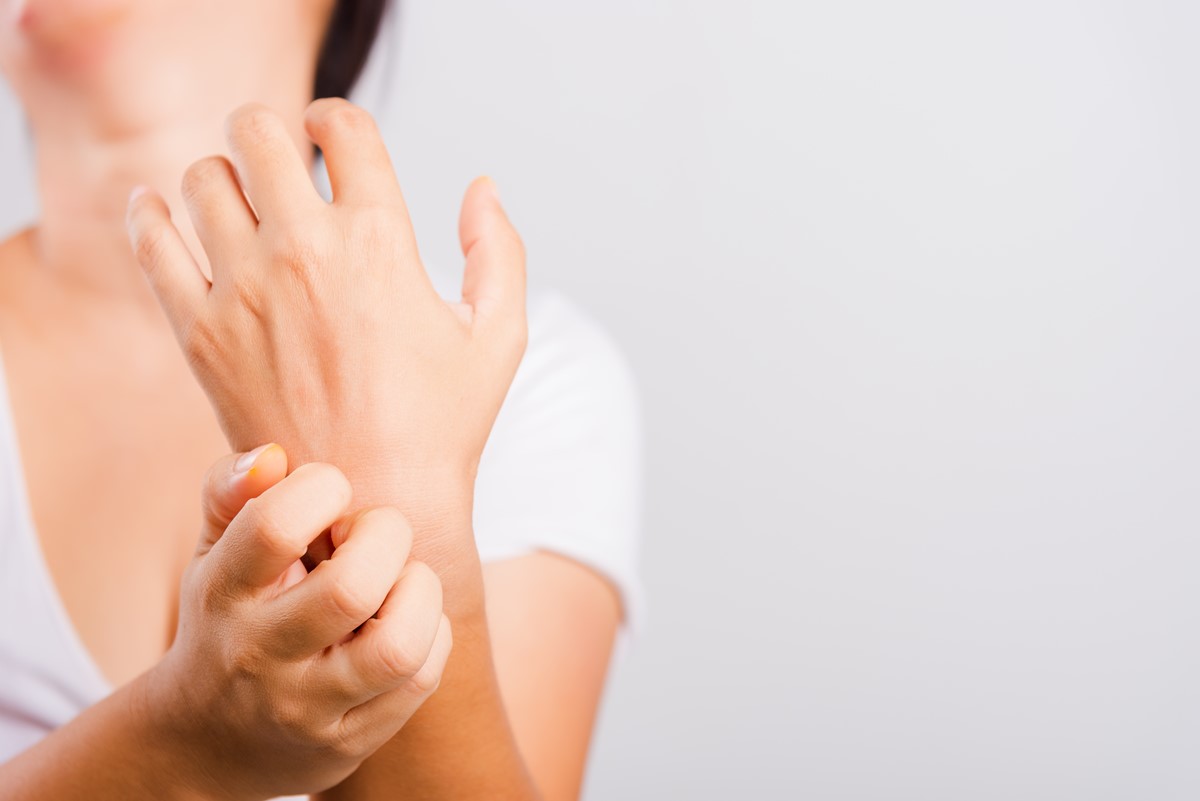
There are two processes going on with hand eczema. One issue is that we handle a lot of household chemicals with our hands. Detergents (anything that makes big bubbles is particularly problematic), deodorants, room fresheners, floor cleaners, bug sprays, and other household products irritate already-sensitive skin and cause breakouts. Hairdressers, kitchen staff, caterers, chefs, cleaners, and people who do healthcare or mechanical work tend to get the condition more often than others.
About 10 percent of the population as a whole has this condition. It is more common in women than in men. It often strikes young mothers when they have their first child, and are spending more time working with soaps, cleansers, and disinfectants.
The other process going on with hand eczema is internal. Eczema is essentially the manifestation of an allergic state in the skin. About seventy percent of people who have eczema also have asthma, food allergies, and/or hay fever. Aboutighty percent of people who have eczema also have elevated levels of immunoglobulin E (IgE) antibodies.
Hand eczema tends to be an adult disease. That is because eczema strikes different parts of the body at different ages. Infants with eczema typically have red, itchy, oozing, crusty patches on the face, neck, and groin. Children and adolescents are more likely to have eczema in the folds of skin where the limbs bend. Adults who have the disease usually have localized inflammation, such as hand eczema or lichen simplex chronicus, crusty inflammation on the ankles or backs of the feet. At any age, skin that is injured by eczema is at risk for infection, especially with Staphylococcus aureus.
What can you do about eczema? Your doctor will probably tell you to use a moisturizer, to reduce the itching and dryness. Coconut oil, which is solid at room temperature, is an excellent choice, because it is not just soothing, it also fights bacteria.
Your doctor will probably also tell you to avoid contact with irritants. This means wearing gloves when you use soaps or detergents or handle antiseptics of chemicals. It also means cutting back on foods that make you break out. Most commonly the problem food is wheat, beef, tomatoes, dairy, citrus, or chocolate, but seldom all six of them.
Steroids you put on your skin don't have as many side effects as those you take by mouth. If those don't work, then you may get systemic drugs, such as Cyclosporine or methotrexate or azothioprine. These are some of the same drugs used to fight cancer. They have severe side effects. Botox shots are also used to treat the condition, but not everyone will benefit from them.
Beyond what your doctor will tell you, it is also helpful to:
- Avoid personal care products (toothpaste, mouthwash, or soap) that contain the ingredient sodium lauryl sulfate.
- Avoid any kind of perfumes, scents, fragrances, or essential oils. Never touch them with your hands.
- Make sure you don't have sleep apnea. In a few cases, treating sleep apnea, oddly, resulted in remission from hand eczema.
- Menne T, Johansen JD, Sommerlund M, Veien NK, Danish Contact Dermatitis G. Hand eczema guidelines based on the Danish guidelines for the diagnosis and treatment of hand eczema. Contact Dermatitis. 2011, 65(1):3–12. doi:10.1111/j.1600-0536.2011.01915.x.
- Photo courtesy of SteadyHealth


